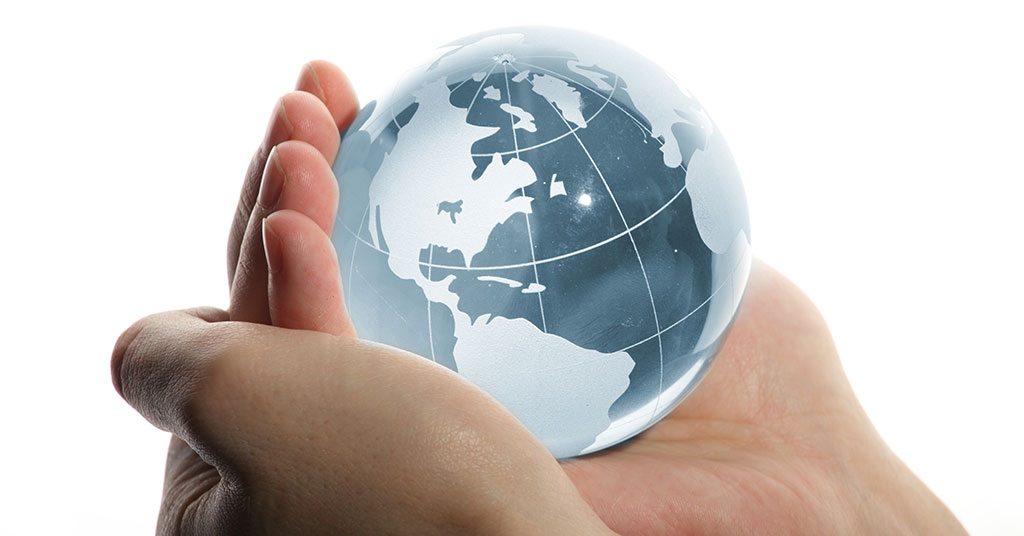It's a New World: Global Consumer Statistics and Trends

Traditional consumer marketing campaigns were planned in detail, organized and structured to reach specific groups of consumers in an orderly fashion. Today 's global marketing environment has changed radically, and companies that fail to make the necessary changes will be unable to compete effectively. Globally, if a company is not marketing on social media in 2018, it will lose access to more than 600 million middle-class consumers in China, India, and Indonesia.
New marketing environment
Several new trends have fundamentally changed the global consumer marketing environment, requiring new approaches, techniques, or considerations to get a company 's message to the target consumer. Here is a sampling.
Entrepreneur model. Today 's Millennials are increasingly entrepreneurial and have changed the standard 9-to-5 workday into a new system of lifestyle flexibility with more independence and freedom. As a result, while cafes, gyms, and streets previously had small amounts of traffic during the traditional workday, in today 's global cities all of those places are busy all day long. The consumer base has changed its habits, and traditional marketing tools and techniques must also be changed and updated to reach these consumers. Social media and mobile technologies are key in this regard.
"Call-out" culture. Empowered consumers are using social media to highlight perceived injustices or abuses, creating pressure on brands to adopt corrective or appropriate behavior. To be aware of issues or developments as soon as possible, companies must maintain a robust social media presence and take action ASAP to minimize any negative fallout.
Changing lifestyles. Euromonitor International reports that consumers today are more community-minded and are reducing conspicuous consumption as they move to more minimalist behavior patterns, focusing on the "shared economy" for services such as Uber, Airbnb, Rent the Runway, etc. They are searching for environmentally friendly products and companies with a strong focus on social responsibility.
Innovation. Companies need to focus on methods and techniques that foster constant innovation, gathering information from customers, franchisees, etc. to not only meet the latest consumer preferences and trends, but also to lead or create new trends that meet the demands of the rapidly changing business environment created by instant communication, global Internet access, and high levels of social media usage.
Social media trends. The number of social media users continues to grow rapidly worldwide. As of April 2018, there were 2.2 billion Facebook users around the world. The percentage of the national population using Facebook has risen to the following levels in these key markets: Canada, 68%; Mexico, 65%; Colombia, 63%; Brazil, 61%; Germany, 46%; Central Europe, 48%; Australia, 69%; Thailand, 75%; Indonesia, 52%; Japan, 30%; and India, 20%. In China, Tencent 's WeChat platform recently hit 1 billion monthly users.
|
Facebook Members by Country |
|||
|---|---|---|---|
|
Country |
Population |
# Members |
% Pop. |
|
China (WeChat) |
1.42 billion |
1 billion* |
49.47% |
|
India |
1.35 billion |
270 million |
19.94% |
|
United States |
326.77 million |
240 million |
73.45% |
|
Indonesia |
266.79 million |
140 million |
52.47% |
|
Brazil |
210.87 million |
130 million |
61.65% |
|
Mexico |
130.76 million |
85 million |
65.01% |
|
The Philippines |
106.51 million |
69 million |
64.78% |
|
Vietnam |
96.49 million |
58 million |
60.11% |
|
Thailand |
69.18 million |
52 million |
75.16% |
|
United Kingdom |
66.57 million |
45 million |
67.59% |
|
Central Europe |
58.42 million |
28 million |
48.10% |
|
Colombia |
49.64 million |
31 million |
62.67% |
|
Canada |
39.95 million |
25 million |
67.65% |
|
Peru |
32.55 million |
22 million |
67.58% |
|
Australia |
24.77 million |
17 million |
68.63% |
|
*WeChat users commonly create multiple accounts. |
|||
Millennials. As today 's biggest global generation, their choices are upending business from the U.S. to China. Companies can reach Millennials most effectively through social media. The world 's 2 billion Millennials have caused companies to adjust to their tastes: local, original, and what they can feel and trust. Despite China 's former one-child policy, it has 400 million Millennials. Morgan Stanley estimates that India 's 410 million Millennials will spend $330 billion annually by 2020.
Key consumer characteristics
The following are some of the key consumer characteristics in a number of key markets, based on reports from the Santander Trade portal.
Canada. Consumers here focus on quality, origin, composition, and price of products. They respond to advertising and new trends; insist on high quality after-sales service or customer support; and show a high level of Internet purchases (up 17% in 2017), with smartphones and other mobile devices increasingly used. High consumer confidence is spurring increased consumption levels.
Mexico. As consumers here have increased their wealth in recent years they have become "time poor," resulting in increased demand for quality products or services that save both time and money. Rather than focusing on the transaction, consumers prefer to build a relationship based on brand loyalty. Smartphone penetration is at 133% of the population (an average of more than one phone per person).
Brazil. Because of the economic downturn in recent years, consumers have less brand loyalty and are searching for more affordable options and special offers. As the economy continues to pick up steam in 2018, however, there will be increasing opportunities for brands. Two-thirds (66%) of the population uses the Internet.
United Kingdom. Consumers respond well to advertising and have preferences for ads that focus on a product 's price, design, quality, or an environmental benefit.
Spain. National consumer characteristics include the price of products and services; low brand loyalty; payment facility and after-sales service; and a preference for known products over newer ones. Spain is one of most improved investment climates for franchise opportunities.
Germany. With a population of more than 81 million, this is Europe 's largest consumer market. Key characteristics include lower levels of brand loyalty and more focus on price and quality. Consumers over 50 are the largest purchasing group, with a focus on the health aspects of products, entertainment, and discounted prices.
China. Consumers are increasingly sophisticated and brand awareness is high, with a greater focus on product quality. The country has more than 700 million social media users, 300 million shoppers online, and an increasing demand for cashless purchases. Advertising is focused on groups rather than on individuals, and primary consumers are between 22 and 40.
India. With its growing population of 1.3 billion, India is set to become the world 's third-largest consumer market by 2025. Consumers purchase brands they recognize, so investment in advertising and promotion is critical. Consumers are brand conscious but not with brand loyalty; prefer fresh products; shop 2 to 3 days a week; and prefer products and services with a value-added benefit. Rural consumers are becoming an increasing factor.
Japan. Its rapidly aging population shows a focus on "silver" products and services. Eating and entertainment activities are popular, and there is an emphasis on environmental benefits and discounted products. There is an increased focus on price and quality, while brand loyalty has decreased.
Australia. GDP per capita of US$46,790 results in high consumption levels. Purchasing power has increased by 43% in the past 15 years. Australians show a preference for new and alternative products and are early adopters who are fond of new technologies. Nearly all (95%) of franchises in Australia are local.
Case Study: Changing Fashion
The fashion company Inditex is based in a small city in Spain. With more than 7,200 stores in 93 global markets, it is the world 's largest fashion group and one of the world 's largest retailers. Zara is its flagship store brand. Inditex also has additional brands: Pull&Bear, Massimo Dutti, Bershka, Stradivarius, Oysho, Zara Home, and Uterqüe. Their stores are mostly company-owned, but they also franchise in some markets.
In the past, fashion companies would produce the majority of their clothing for the next season beforehand, then ship it to their stores just before the start of the new season. To change and produce new styles or designs would take months before any new clothing arrived in the stores. If consumer tastes or preferences had changed in the interim, or manufacturers had missed the new trends, their fashions would not sell, leaving them with unsold stock and mounting losses.
To more closely match consumer preferences and demand, Zara changed the industry 's fundamental design, production, and distribution system, increasing sales and sharply reducing unsold inventory. Instead of committing to a large amount of production up front before the fashion season begins, Zara initially produces only a small amount and then uses customer feedback and input from store staff to produce new designs that meet customer preferences--and then increase production of designs that are selling well. Instead of taking months to get apparel from the design table into stores, Zara can move product from the design and production phase into stores in 15 days. To further shorten lead times, 60 percent of manufacturing is now local.
The founder of Inditex, Amancio Ortega Gaona, is a visionary who has successfully changed the fashion design, production, and distribution model to better understand and rapidly meet the consumer demands. Today he is near the top of the list of the wealthiest people in the world, and other leading fashion retailers have followed his example. This is the future of large-scale consumer marketing.
William Edwards is CEO of Edwards Global Services (EGS). This article was created by the EGS 's U.S.-based team, who collectively have 150 years of international franchise experience. Contact him at bedwards@edwardsglobal.com or 949-224-3896. Robert Jones is the chief international officer tor EGS and can be contacted at rjones@edwardsglobal.com.
Share this Feature
Recommended Reading:
Comments:
comments powered by DisqusFRANCHISE TOPICS
- Multi-Unit Franchising
- Get Started in Franchising
- Growth
- Operations
- Open New Units
- Leadership
- Marketing
- Technology
- Legal
- Awards
- Rankings
- Trends
- Featured Franchise Stories
FEATURED IN

Franchise Update Magazine: Issue 3, 2018






 The franchise listed above are not related to or endorsed by Franchise Update or Franchise Update Media Group. We are not engaged in, supporting, or endorsing any specific franchise, business opportunity, company or individual. No statement in this site is to be construed as a recommendation. We encourage prospective franchise buyers to perform extensive due diligence when considering a franchise opportunity.
The franchise listed above are not related to or endorsed by Franchise Update or Franchise Update Media Group. We are not engaged in, supporting, or endorsing any specific franchise, business opportunity, company or individual. No statement in this site is to be construed as a recommendation. We encourage prospective franchise buyers to perform extensive due diligence when considering a franchise opportunity.